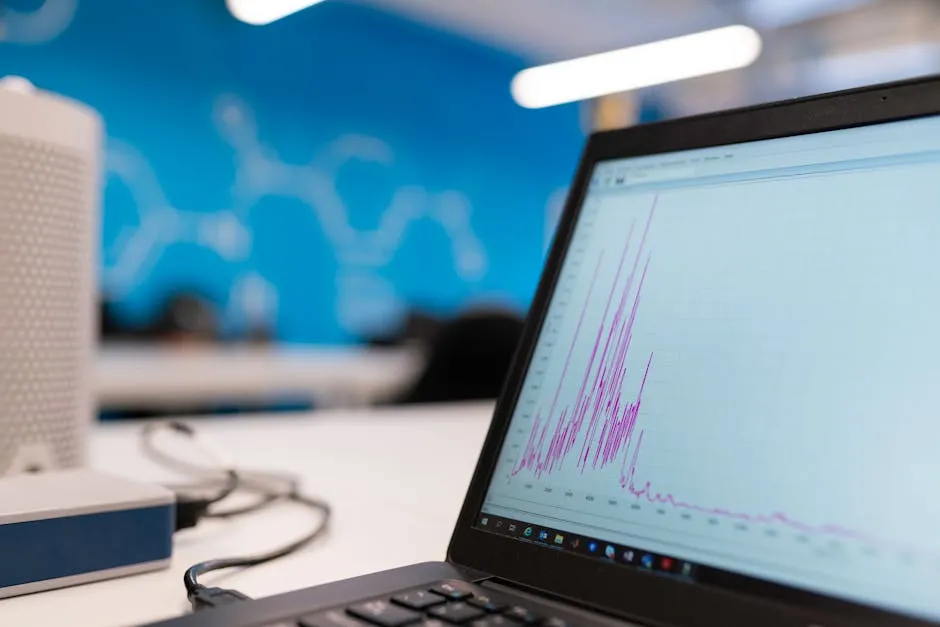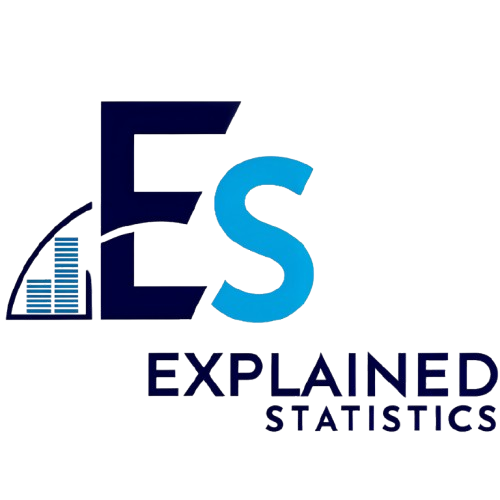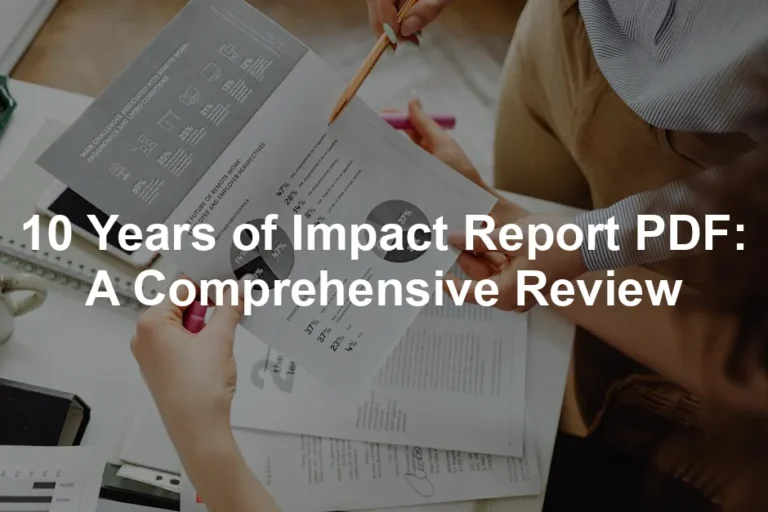Introduction
In today’s data-driven world, stakeholders often rely on statistical analyses to inform their decisions. However, understanding the distinction between statistical significance and practical significance is crucial for interpreting research findings accurately. This article will provide strategies for effectively explaining these concepts to stakeholders.
To delve deeper into statistical concepts, consider checking out an introduction to statistical learning with python book length.
Overview of Statistical vs Practical Significance
Statistical significance and practical significance are two critical concepts in research. Statistical significance indicates whether an observed effect is likely due to chance. This is typically assessed using p-values. If the p-value is below a predetermined threshold, often 0.05, the result is deemed statistically significant. However, this doesn’t imply that the finding holds real-world importance.
On the other hand, practical significance concerns the relevance and impact of the findings in real-world settings. It evaluates whether the size of the effect observed is meaningful enough to warrant action. A common misconception is that statistical significance equates to practical significance. This misunderstanding can lead to misguided decisions.
When communicating these ideas, clarity is paramount. Use simple language, relatable examples, and avoid jargon. Illustrate with scenarios that stakeholders can relate to. For instance, a small change in customer satisfaction scores may be statistically significant, but if it translates to mere pennies in profit, its practical significance may be negligible.

By emphasizing both types of significance, stakeholders can make well-informed decisions rather than relying solely on statistical tests. And speaking of well-informed decisions, if you’re looking to analyze your data in style, consider using Tableau Software. It’s like having a magic wand for your data visualization needs!
Limitations of Statistical Significance
Statistical significance is often hailed as the holy grail of data analysis. But wait! There are some pitfalls to watch out for. First, relying solely on p-values can be misleading. A p-value tells you whether an effect is likely due to chance, but it doesn’t inform you about the effect’s size. Relying only on p-values is like judging a book by its cover—looks can be deceiving!
Next up, let’s talk sample size. The larger your sample, the more likely you are to find a statistically significant result, even if that result is practically meaningless. Think of it this way: if you ask 1,000 people if they like pineapple on pizza, you might get a statistically significant result, but who really cares if only two people actually enjoy it?
Lastly, there’s the risk of misinterpretation. Stakeholders might see a statistically significant result and assume it’s important. But just because it’s statistically significant doesn’t mean it matters in the real world. If your results are significant but your effect size is tiny, you might be barking up the wrong tree. To avoid these pitfalls, consider using an Effect Size Calculator to get a clearer picture!

Understanding Practical Significance
Definition and Explanation
Practical significance is all about the real-world implications of your findings. It asks, “Does this result matter?” Unlike statistical significance, which relies on p-values, practical significance considers effect sizes. One common measure of effect size is Cohen’s d, which quantifies the difference between groups in terms of standard deviations. For instance, if a study finds a Cohen’s d of 0.8, it suggests a large effect—far more meaningful than a mere p-value.

Importance of Context in Practical Significance
Context is king when it comes to practical significance. What might be a significant finding in one situation could be trivial in another. Let’s say a new training program improves employee productivity by 1%. In a small company, that might be a significant boost! But in a massive corporation, it might not even make a dent in overall performance.
Take the medical field, for instance. A new drug might show a statistically significant reduction in symptoms, but if the average symptom reduction is just a fraction of an inch, is that really worth the side effects? Always assess practical significance within the context of your specific scenario. It’s vital to determine whether your findings carry weight in the real world.
For those diving deeper into the realm of data analysis, a great read is R Programming Language Book. It offers insights that can enhance your understanding of practical significance!

Comparing Statistical and Practical Significance
Key Differences
Now, let’s break down the differences between statistical and practical significance. Statistical significance focuses on whether an observed effect is likely due to chance, typically assessed through p-values. On the other hand, practical significance evaluates the real-world relevance of that effect.
To visualize this, imagine a chart plotting p-values against effect sizes. The chart shows that while a result may be statistically significant, its effect size could be so small that it barely registers in practical terms. This relationship highlights the need to look beyond p-values and focus on what the data truly means for decision-making. By understanding these key differences, stakeholders can make more informed choices based on both statistical evidence and practical relevance.

When to Use Each
Understanding when to apply statistical significance versus practical significance can be a game changer. Statistical significance shines in research settings where hypothesis testing is key. For example, a clinical trial might reveal that a new drug reduces symptoms statistically significantly. But hold on! If that reduction only barely nudges the needle on quality of life, its practical significance is questionable.
In contrast, practical significance takes center stage in decision-making scenarios. Imagine a company evaluating a marketing campaign. A statistically significant increase in sales may look impressive, but if that increase translates to just a few extra dollars, stakeholders might want to reconsider their strategy. Decisions should be based on both the statistical data and its real-world implications.
If you’re interested in diving deeper into data analysis concepts, Python for Data Analysis Book is a fantastic resource that can help you make sense of data in practical ways!

Communicating Significance to Stakeholders
Best Practices
When explaining these concepts to stakeholders, clarity is your best friend. Start with analogies. For instance, you might compare statistical significance to a light bulb: it tells you something is “on,” but it doesn’t show how bright it is. This helps illustrate that while something can be statistically significant, it may not illuminate meaningful real-world effects.
Real-world examples can also bridge gaps in understanding. Say you’re discussing a new product feature. If the feature shows statistical significance in user engagement but only boosts engagement by 1%, that’s your cue to emphasize its practical implications. Ask questions like, “Is this worth the investment?” This encourages stakeholders to think critically.
For those who prefer structured learning, Coursera Learning Material offers excellent resources to understand these concepts better!

Tailoring Communication to Different Stakeholders
Communication should always be tailored to your audience. For technical stakeholders, you can dive into the nitty-gritty. Discuss p-values and effect sizes with confidence. However, with non-technical audiences, keep it simple. Use relatable language and avoid jargon.
Consider a case study where a company launched an initiative based on statistically significant findings, only to find it lacked practical significance. This could emphasize the importance of considering both types of significance. By sharing such examples, you can illustrate successful communication strategies that align with varying levels of expertise.

Practical Applications of Significance
Using statistical and practical significance effectively can lead to better decision-making in various contexts. For example, a company can use statistical significance to validate research findings but rely on practical significance to prioritize projects that genuinely impact their bottom line. So, next time you present data to stakeholders, remember: it’s not just about being statistically significant; it’s about making a significant difference.

Case Studies
Let’s take a look at some case studies that highlight the importance of understanding both statistical and practical significance.
Case Study 1: The Marketing Campaign Dilemma
A marketing team ran a campaign that showed a statistically significant increase in engagement metrics. The p-value was a delightful 0.03. However, when they looked at the actual revenue impact, they found that the increase translated to a mere $100. Ouch! While they had a statistically significant result, the practical significance was virtually nonexistent. They learned the hard way that a flashy p-value doesn’t always equate to a meaningful impact on the bottom line.

Case Study 2: Medical Research Gone Awry
In a clinical trial for a new drug, researchers found a statistically significant reduction in symptoms with a p-value of 0.01. However, the effect size was minuscule, resulting in only a 2% improvement in patient outcomes. While the study made headlines, it sparked debates about whether the drug was worth the investment and potential side effects. This example illustrates how focusing solely on statistical significance can lead to misguided conclusions in healthcare.

Case Study 3: Educational Interventions
An education program aimed at improving literacy skills reported a statistically significant improvement in test scores. Researchers celebrated a p-value of 0.04. Yet, when examining the effect size, it became clear that the improvement was only a few percentage points. This raised questions about the program’s real-world impact. Stakeholders realized they needed to gauge practical significance to make informed decisions about funding and implementation.

Ignoring practical significance can lead to costly missteps. These case studies remind us that while statistical significance can be a shiny badge, practical significance is what enables impactful decision-making.

Tools and Resources
To help stakeholders better grasp statistical and practical significance, several tools and resources are available.
1. Statistical Analysis Software
Platforms like R, Python, and SPSS are excellent for performing statistical tests and calculating p-values. They allow users to visualize data and explore effect sizes. R, for instance, has packages like ggplot2 for visually representing data, making it easier to communicate findings. If you’re looking for an excellent introduction to R, check out the Statistical Analysis with R: A Practical Guide Book.

2. Effect Size Calculators
Effect size calculators, such as those found on websites like Psychometrica, help stakeholders understand the magnitude of an effect. By inputting data, users can see how significant or trivial their findings might be in practical applications.
3. Data Visualization Tools
Tools like Tableau and Power BI offer intuitive interfaces for visualizing data. Effective graphs and charts can help stakeholders see not just whether results are statistically significant, but how they translate to real-world outcomes. A well-crafted visualization can tell a compelling story that resonates with a non-technical audience. If you’re looking to enhance your data visualization skills, check out Power BI.

4. Online Courses and Webinars
Educational platforms like Coursera and LinkedIn Learning provide courses on statistics and data analysis. These courses often include modules specifically addressing statistical versus practical significance, enhancing understanding for those in decision-making roles. If you’re interested in practical learning, check out LinkedIn Learning Courses for a variety of topics!
5. Articles and Blogs
Resources like the American Statistical Association’s website and various data science blogs frequently discuss the distinctions between statistical and practical significance. Following these can keep stakeholders informed about best practices and the latest insights. For instance, you can explore the best data visualization tools for complex systems statistics to enhance your understanding.
By leveraging these tools and resources, stakeholders can cultivate a deeper understanding of both statistical and practical significance. This empowers them to make informed decisions based on robust data analysis rather than relying solely on p-values.
Conclusion
Understanding the difference between statistical and practical significance is essential for stakeholders to make informed decisions. By effectively communicating these concepts, researchers can empower stakeholders to evaluate data critically and avoid common pitfalls.
FAQs
What is the difference between statistical and practical significance?
Statistical significance is about the likelihood that an observed effect is real and not due to chance. It usually relies on p-values, which indicate whether results can be trusted. Practical significance, however, digs deeper. It assesses whether the effect is meaningful in real-life situations. For example, a study might show a statistically significant increase in weight loss, but if it’s just a few ounces, does it really matter? Hence, one focuses on numbers while the other considers real-world impact.
Why is it important to differentiate between the two?
Understanding the difference helps stakeholders make well-rounded decisions. Relying solely on statistical tests may lead to choices that overlook the actual relevance of findings. Imagine investing in a product that shows statistical promise but fails to create a buzz in the market. Without distinguishing between the two, decision-makers risk acting on data that doesn’t resonate with real-world needs.
How can I explain these concepts to non-technical stakeholders?
Keep it simple! Use relatable language and real-life analogies. For instance, you might say statistical significance is like a green light—it means go, but practical significance is the traffic jam waiting ahead. Explain the implications using examples they care about, like customer satisfaction scores. This way, they grasp not just the ‘what’ but the ‘so what’ of your findings.
What are common misconceptions about statistical significance?
One major misconception is that statistical significance automatically means practical significance. People often equate a low p-value with a big impact, overlooking the fact that a small effect can still be statistically significant. Another false belief? That a non-significant result means no effect exists. It’s essential to clarify that a lack of statistical significance can arise from insufficient data or variability, not necessarily from the absence of a real effect.
How can effect size be measured?
Effect size can be measured using various statistics, such as Cohen’s d or Pearson’s r. Cohen’s d quantifies the difference between two groups in terms of standard deviations, offering insight into how large an effect is. Meanwhile, Pearson’s r measures the strength of a relationship between two variables, providing context beyond just p-values. These metrics help paint a clearer picture of practical significance.
Can something be statistically significant but not practically significant?
Absolutely! A classic example is when a study finds a statistically significant difference due to a large sample size. If the effect size is tiny—like a mere 1% improvement—it may not matter in practice. This can lead to misguided conclusions, like believing a new policy is effective when, in reality, it barely moves the needle. It highlights the importance of considering both statistical and practical significance for meaningful decision-making.
Please let us know what you think about our content by leaving a comment down below!
Thank you for reading till here 🙂
All images from Pexels




